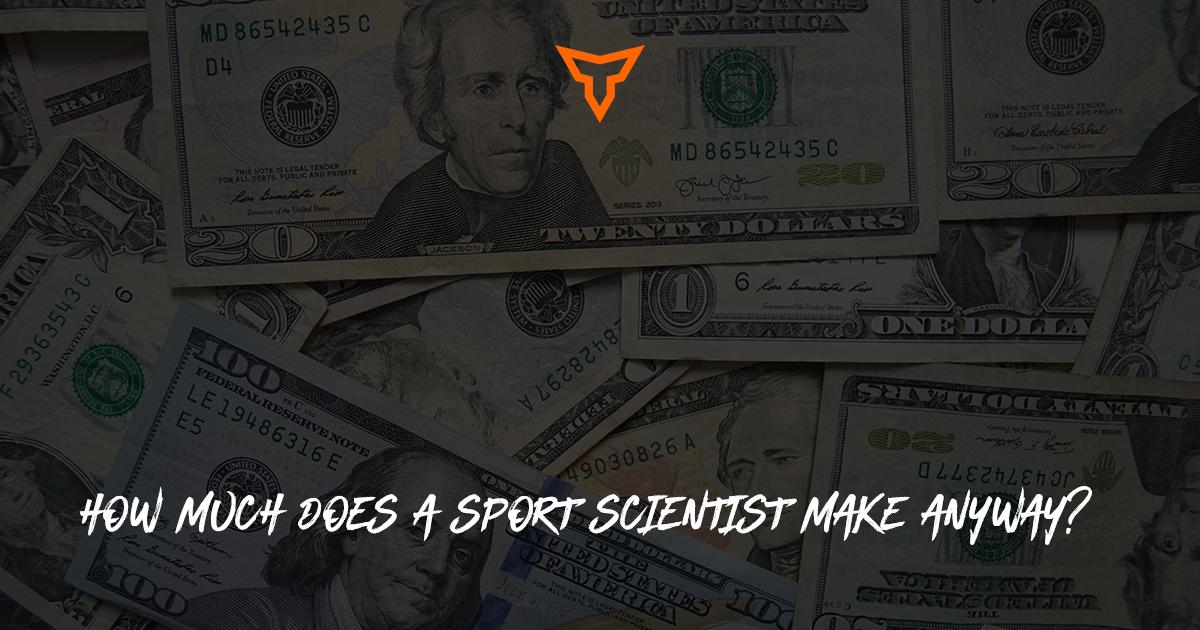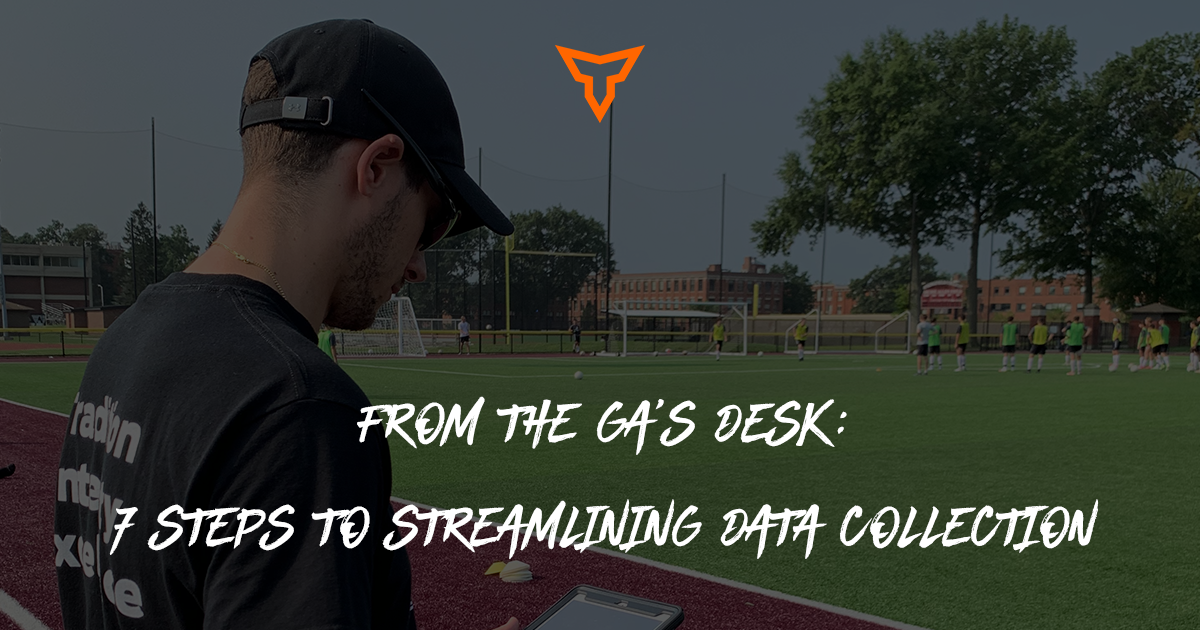7 Things to Consider Before Building a Sport Science Program
Believe it or not, the key to building a successful Sports Science Program has nothing to do with the amount of technology you have, and everything to do with your ability to effectively communicate information.
I know I sound like a car salesman trying to tell you that you don’t need a car, but if you don’t have a destination in mind, that car is going to sit in the garage and collect dust.
I’m not going to tell you what technology you need to buy, I’m going to give you principles for you to figure out the best methods for your team or school to be able to implement a successful Sports Science Program.
1. Technology Integration
If you read my last article (shameless plug), I wrote about my 3 pillars for successfully implementing technology. This technology can be as simple as Timing Gates, or as expensive as a 1080 Sprint. Technology Integration requires creating best practice testing protocols, determining the logistics of the technology in your training program, collecting, cleaning, storing, reporting the data, and implementing interventions with data-informed decisions. Without a clear problem to solve and valid testing procedures, the rest of the principles fall flat.
2. Data Centralization
This does not mean run out and spend $40,000 on an Athlete Management System. I’ve heard of too many programs deciding that this should be their first Sports Science purchase. Without a Sports Scientist, you’re most likely going to spend 40k on a tab that sits unclicked in everyone’s bookmarks. The most popular AMS companies are not intuitive, are limited, require a large learning curve, and need a dedicated person to operate. Taking Sports Science to the next level in your program DOES require someone to know enough to be dangerous in Data Science. Whether your drug of choice is a high-end AMS like Kitman or Smartabase, or you’re a Power BI or Tableau rebel, having the knowledge of databasing, and a centralized storage system for your data will take your program from a cluster (we’ll leave the other word out) of excel files to a streamlined system.
3. Annual Planning & Periodization
Reverse Engineering has become the new buzz word in Strength & Conditioning. Sports Science involves leveraging your data to ensure that your team is actually preparing for the game demands. Yes, you can plan this down to the Explosive Effort that each Athlete will need to complete in each direction to be prepared to play in a Football Game, but this concept can be as simple as using TIME to determine how long your team is practicing for each day. For this concept specifically, the fanciest graph in the world means nothing if you can’t meet your sport coaches where they are to communicate the “why” and “how” that goes with adjusting practices. This requires understanding the sport at a high level (and yes, you can do that as a 5’1 female), and being able to speak their language.
4. Athlete Profiling
To me, this is where I have the most fun leveraging technology to give me insights into how an athlete performs. I look at Athlete Profiling as a genetic test for my athletes. It won’t tell me how good they will be at their sport, but it will tell me if they have some baseline qualities that will put them in a potential position to be successful in their sport. I say this because true Athlete Profiling involves Technical, Tactical, and Psychological Analysis in addition to Physical, to determine what the athlete really needs. Too often sport coaches say, “He needs to get stronger this off-season” and then the athlete spends his extra time bench pressing. Maybe he really needs to be studying the playbook, or working a specific technique, but we’ve pigeonholed it into a physical issue. My Physical Athlete Profile involves a Movement, Strength, Power, and Speed Profile. Each comes with specific interventions based on Division One Football Data to determine standards for each position. Obviously, there are always players who defy these baselines, but I’ll tell you right now there isn’t a Wide Receiver in the NFL with a max speed of 17 mph. We have too much information and are too good of coaches to not be able to individualize some aspects of our training for each athlete.
5. Performance Monitoring
This is everyone’s least favorite because it requires seeing if your training program actually worked.. It requires asking the question of what are you truly trying to get out of your training program, and are you prescribing training modalities, volumes, and intensities appropriately to achieve your goal. This goes further than, “Did our team get better at clean, squat, and bench?” If you are actually trying to put mass on your team in the Winter, are you looking at body composition data to ensure that the players are gaining lean mass? But if you’re also trying to improve your team’s ability to accelerate, are you tracking speeds achieved during loaded sprints to see if they’re actually getting better at producing horizontal force? The hardest question comes when you determine Key Performance Indicators for each position. If a KPI for a Wide Receiver is max speed, tracking KPIs along with each training phase will help you see what really matters. If the athlete’s max back squat keeps increasing and the KPI (Max Speed) doesn’t, maybe the focus for that athlete has to change.
6. Athlete Readiness
I like to joke that In-Season is the Superbowl for Sports Scientists. Performance Monitoring has been happening long before we created fake titles to let everyone know that we are the ones that can hook the computer up to the HDMI cord. The biggest impact a Sports Scientist can have is to effectively collect Internal & External Load and track the athletes’ response throughout the season. Again, some of this information can be collected without expensive technology (think: game play counts, team period reps, session RPE), but I believe this is the biggest impact that technology can have. Creating specific Weight Room Protocols based on Force Plate Metrics (RSI-Mod Z-Scores, Asymmetry %), Field Protocols based on GPS Data (Decreased Monday Reps for High Game Load, 90% Effort Tracking, High Speed Yard Z-Scores), and Recovery Protocols based on Session RPE (I don’t use Heart Rate in Season because football pads). And to truly be an Applied Sports Scientist is to know how your DB’s bodies are feeling based on how grumpy they are in the lift on Monday morning.
7. Return-to-Play Efficiency
Sports Medicine traditionally does a great job of using data and a terrible job of collecting and storing it (where did you put those quad girth measurements?). Strength and Conditioning traditionally does a great job collecting and storing data and a terrible job of using it. Creating extreme collaboration between the two departments is simple: Ask your AT/PT what they are trying to measure. Your athlete is cleared for jump roping? Use the Force Plate 10/5 Hop Test. Your athlete is cleared for push ups? Use the Force Plate Push-Up Test. Wild. Now everyone has access to objective information in the return-to-play Process. Using the same information gathered for annual planning and periodization we have *cough* reverse engineered position-specific game and practice demands. Now we have that information to determine EXACTLY what we have to rehab each athlete. This can also be done as easily as increasing the time of the Technical/Tactical based periods (Indy, Install, Teach, etc) and increasing reps counts for the situation based periods (Team, Special Teams, 7 on 7). Being able to objectively track return-to-play data and communicate that information across departments is the easiest way to start to develop a common language and buy in with sports science data.
Sports Science doesn’t have to be intimidating. It is not defined by your budget or your tools. Every program with a piece of paper, a pen, and a stopwatch can start to develop their own sports science program. Every training phase is an experiment. And the more practitioners we have asking good questions, the closer we may get to an answer. Probably not. But a girl can dream.
Subscribe to our blog
Subscribe to receive the latest blog posts to your inbox every week.
Related posts

How Much Does a Sport Scientist Make Anyway?

From the GA's Desk: 7 Steps to Streamlining Data Collection


